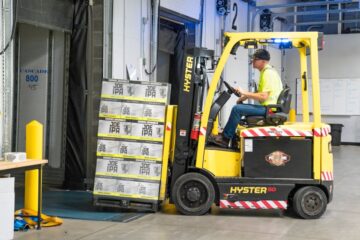One of the many joys of childhood is getting to play around on the playground, and whether it’s for a school, house, or public space, you need to guarantee safety when building playgrounds. That’s where playground safety surfacing comes into play.
There are several materials tailored to improve the safety of playgrounds and ensure that kids have fun without the fear of injuries. Once installed by a trusted playground surfacing contractor, these safety surfacing materials are built to cushion falls, prevent slips, and still improve the playground experience.
So, what are the surfacing materials needed for playground safety? How do they improve playgrounds?
1. Engineered Wood Fibre
This material ranks highly in terms of safety thanks to its unconventional texture. Its texture is a result of a mesh of fibres together to form a dense surface that’s very absorbent and cushioning. The material is affordable and great for open spaces but requires regular maintenance in high-use areas.
Another perk of engineered wood fibre is its slip resistance. Coupled with strong shock absorbance, it’s a safe material for playgrounds.
2. Poured-In-Place Rubber
Next on the list is the material that’s blessed with versatility and durability. Its function goes beyond playgrounds due to the many colours and designs it comes in. But for playgrounds, it’s a sturdy and durable material that offers a great deal of safety.
Other reasons why poured-in-place rubber is used include its firmness and the lack of concealed materials, but it is a costly material, so it’s not as widely used as other options.
3. Synthetic Turf
As the name suggests, this is a material that mirrors the look and feel of natural grass, even though it’s artificially made. The material lacks loose parts, so you won’t have to worry about concealed objects that could be harmful. At the same time, the material is easy to maintain and offers a nice touch to playgrounds.
Synthetic turf is indeed more expensive, but it has low maintenance and higher durability than other materials, so it’s worth taking a look at.
4. Synthetic Tiles
From artificial grass to artificial tiles, synthetic tiles are rubber-based materials that are installed over concrete and asphalt. Like other rubber-based materials, synthetic tiles are particularly useful for cushioning falls in playgrounds. That way, they reduce the risk of injuries and the impact of falls.
Other reasons to install synthetic tiles include their higher durability, wide array of designs, and the ease at which you can repair the materials.
5. Recycled Rubber Mulch
Also ranked as one of the safest playground surfacing materials, you can bet on recycled rubber mulch to improve the shock absorbance of playground surfaces and reduce the impact of falls. It’s also a cost-effective material, customisable, stain and slip-resistant, and comes in a variety of colours.
Unlike wood chips, recycled rubber mulch doesn’t need too many refills, and it drains properly in the event of rainy weather conditions.
Conclusion
Safety is the number one priority for any playground structure, so you need to have the best surfacing materials on the ground to ensure improved experiences and peace of mind. In the end, kids can only have fun when they feel safe and secure on the playground.




